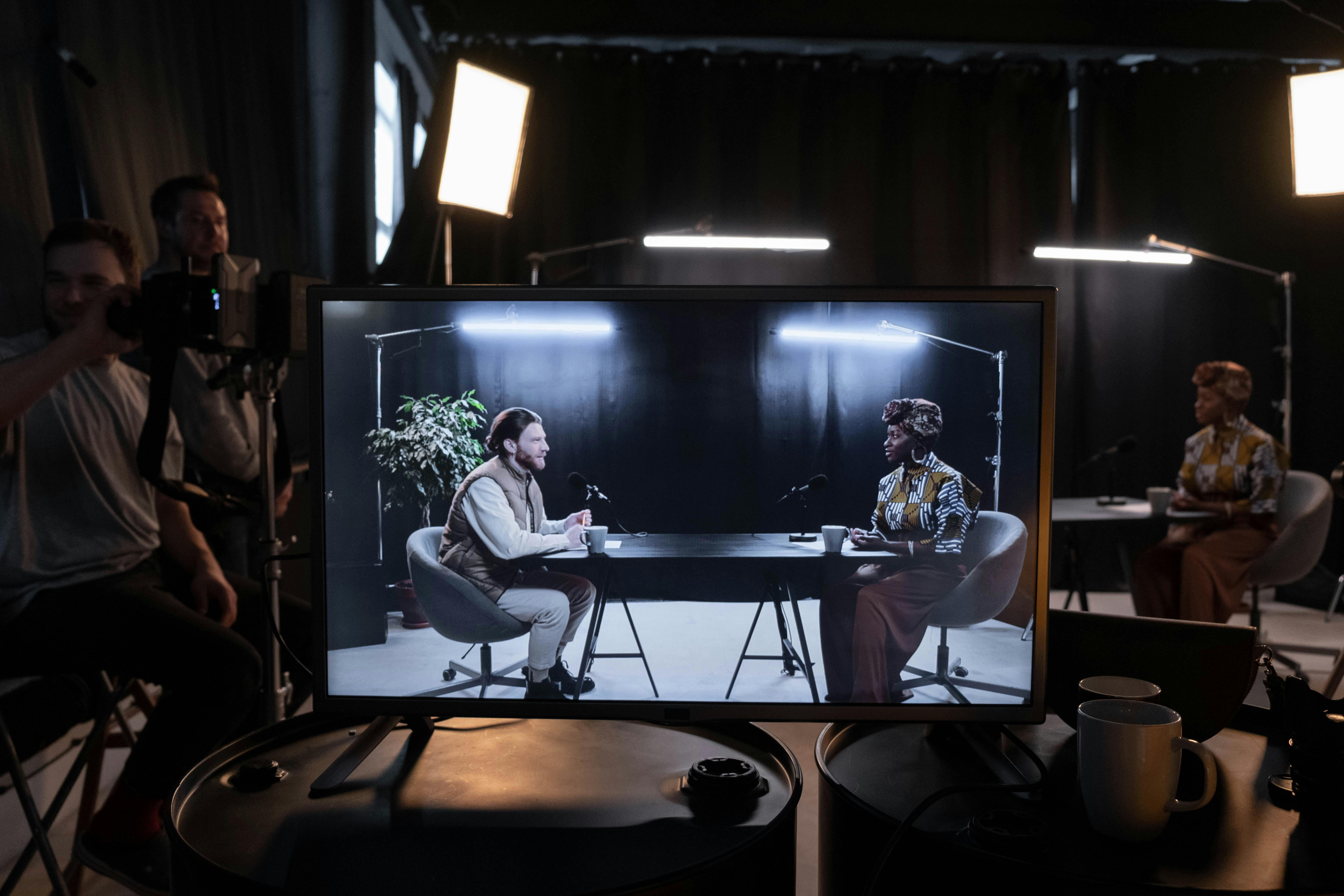Jun 19, 2025
Why Your Video Interviews Feel Forced—And How to Make Them Real (and Watchable)
Why do most business video interviews feel awkward and forced? Discover the real reasons behind stiff on-camera moments—and learn practical tips to make your interviews natural, authentic, and engaging for your brand.
It is a common observation that many business interviews conducted on video lack a sense of naturalness, often resembling the experience of reading aloud a lengthy set of terms and conditions. Witnessing individuals freezing up, struggling to articulate their thoughts, or providing responses that come across as robotic can be cringeworthy. If you have shared this sentiment, rest assured you are not alone. The root of the issue typically lies in the process rather than the individuals involved. This article delves into the reasons behind the artificial and uneasy feel of your video interviews, offering solutions to transform them into genuine, comfortable interactions that captivate viewers.
Let’s Be Honest: Most Video Interviews Are Painful
You know the look—tight smiles, stiff shoulders, and answers that sound like they were written by a committee. If you’ve ever watched a brand’s interview video and cringed, you’re not alone. Most business interviews feel forced, awkward, and about as natural as a robot reading cue cards. But here’s the good news: it doesn’t have to be that way.
1. Why Do Interviews Feel So Uncomfortable?
The Problem:
Camera Anxiety: Most people aren’t used to being on camera. The red light goes on, and suddenly even the friendliest team member turns into a deer in headlights.
Over-Prepared, Under-Relaxed: Reading from scripts or memorizing answers kills spontaneity and makes everything sound robotic.
Zero Rapport: If you haven’t built trust before filming, your subject will clam up and deliver safe, boring answers.
Interrogation Mode: Rigid Q&A setups feel more like a job interview than a conversation, which puts everyone on edge.
2. The Biggest Mistakes Businesses Make
Picking the Wrong Person: The CEO might know the business, but if they’re uncomfortable, your video will be too. Choose people who are passionate, genuine, and willing to share real stories—not just their job title.
Scripted to Death: Over-scripting leads to wooden delivery. Brief your subject, but let them use their own words.
Ignoring the Warm-Up: Jumping straight into tough questions guarantees awkwardness. Start with easy, safe questions to get the conversation flowing.
No Pre-Interview: If you don’t chat beforehand, you miss the chance to build rapport and set expectations.
3. How to Make Interviews Feel Natural (and Actually Watchable)
A. Build Trust Before You Film
Do a pre-interview off camera. Get to know your subject, share your process, and explain what to expect.Let them know it’s okay to mess up—editing is your friend.
B. Ditch the Script, Embrace Conversation
Use open-ended, conversational questions (“Tell me about”, “How did that feel?”).Let the conversation flow naturally—don’t grill your subject.
C. Set the Scene for Comfort
Use a relaxed, distraction-free environment.
Start with casual conversation before you hit “record”—sometimes the best answers come when people forget the camera is rolling.
D. Keep It Light and Human
Smile, laugh, and show you’re listening—your energy sets the tone.Don’t be afraid to leave in genuine emotion, pauses, or laughter in the final cut.
E. Edit for Authenticity
Don’t cut the dialogue too tight. Let moments breathe, and keep those natural reactions and smiles in the edit.
Layer in B-roll, reaction shots, and behind-the-scenes moments to make the story feel alive.
4. Pro Tips From the Field
Use Two Cameras: Adds variety, hides awkward pauses, and makes editing seamless.
Visual Prompts: Place cue cards or keywords near the lens to jog memory without making people read.
Walk-and-Talks: Sometimes moving around loosens people up and sparks better conversation.
Coach, Don’t Direct: Offer gentle guidance, not rigid instructions. The goal is real, not perfect.
Forced Vs. Natural Interviews
What Doesn't Work | What Actually Works |
|---|---|
Scripted Answers | Candid, Conversational Responses |
Rigid Q&A | Open-Ended, Flowing Conversation |
No Warm Up | Pre-Interview and casual chat |
Ignoring Comfort | Relaxed, Friendly Environment |
Over-Edited, Lifeless cuts | Edits That Keep Real Emotion |
Final Thoughts
The best interviews don’t sound like interviews—they sound like stories you’d tell over coffee. If you want your brand’s video to actually connect, ditch the script, build trust, and let real people share real moments. That’s how you turn awkward into authentic—and viewers into believers.
Ready for interviews that feel real (and actually work)?
Let’s talk.
Read More.
Stay ahead in the digital world with expert insights on branding, design, and marketing.



